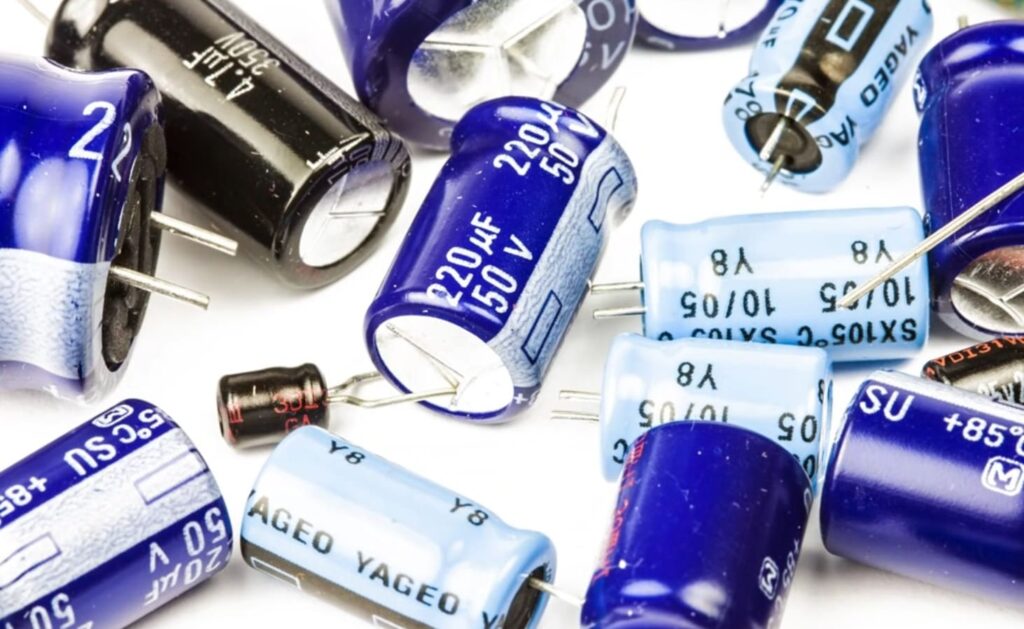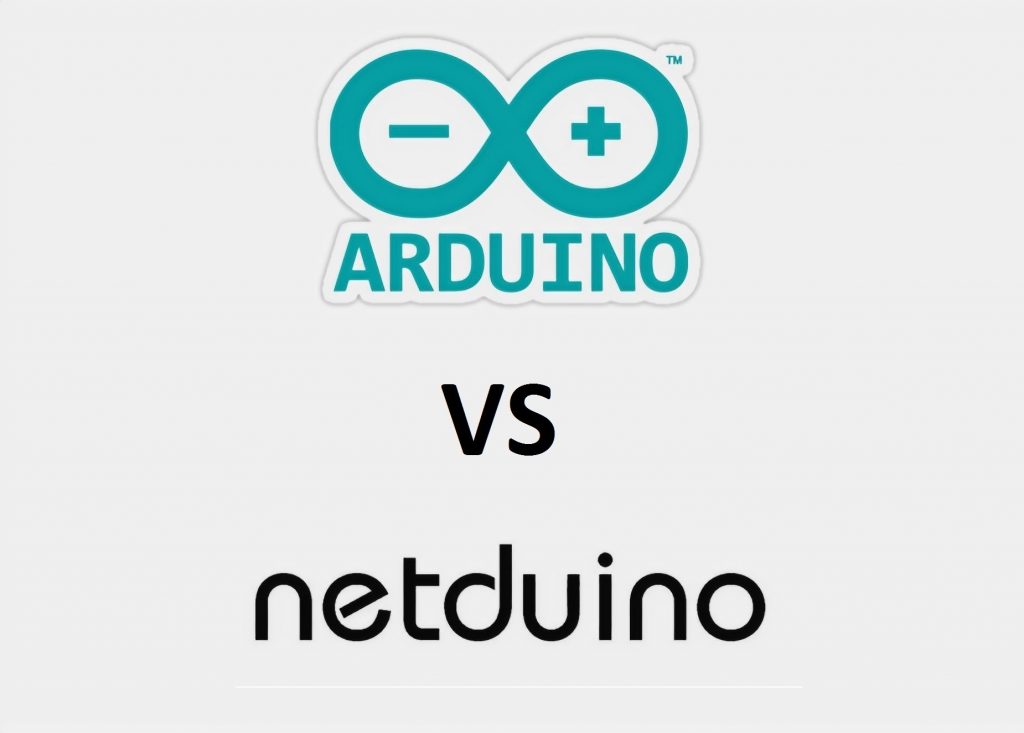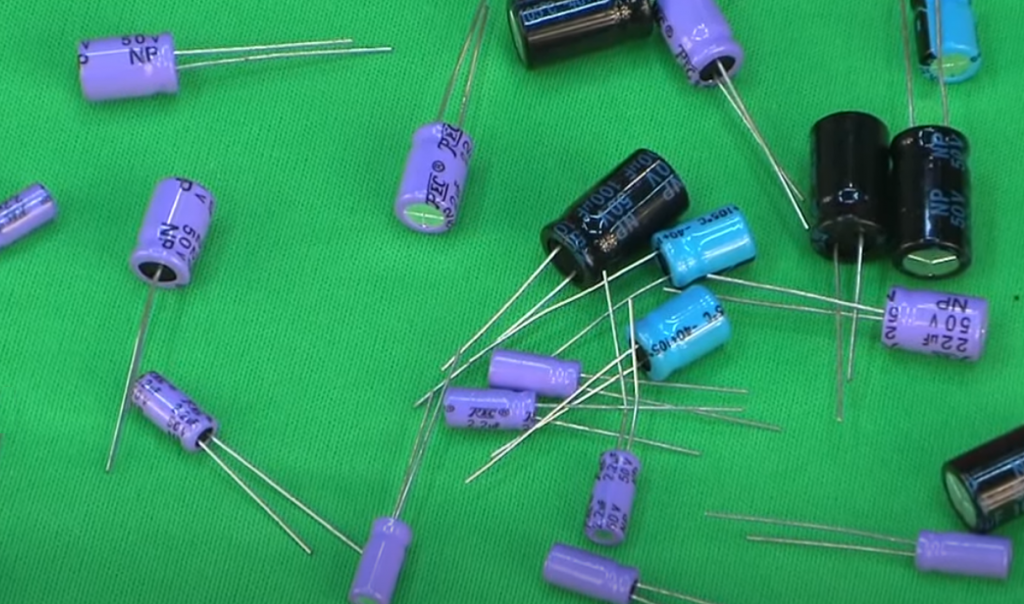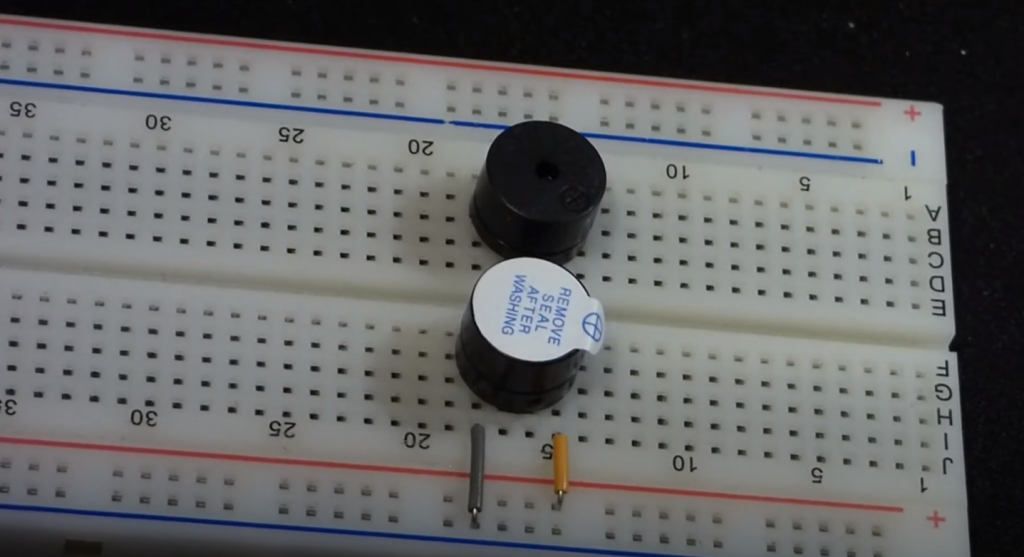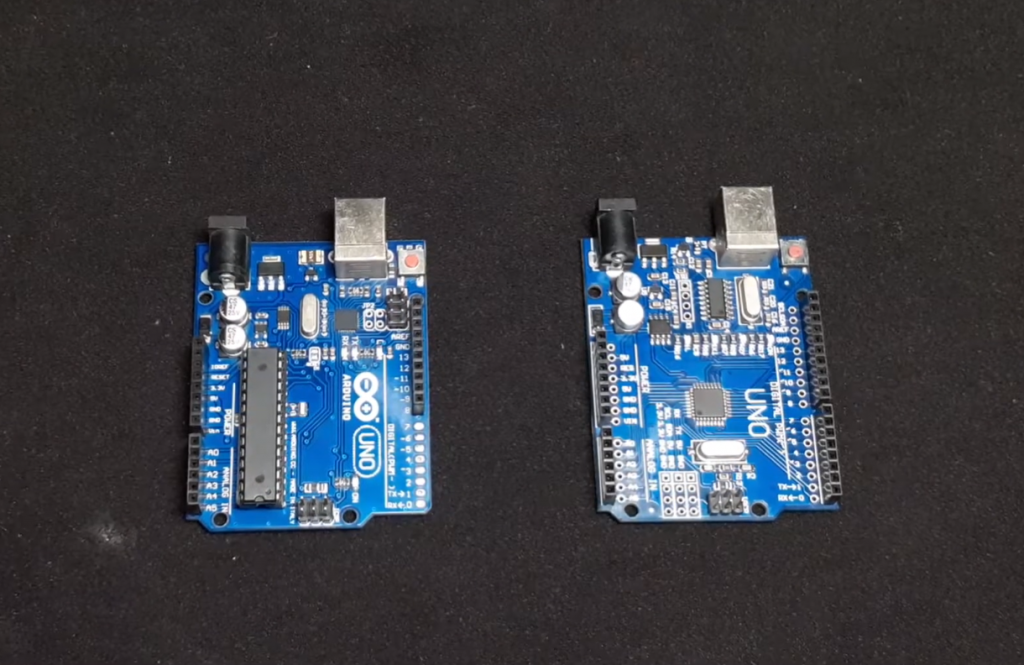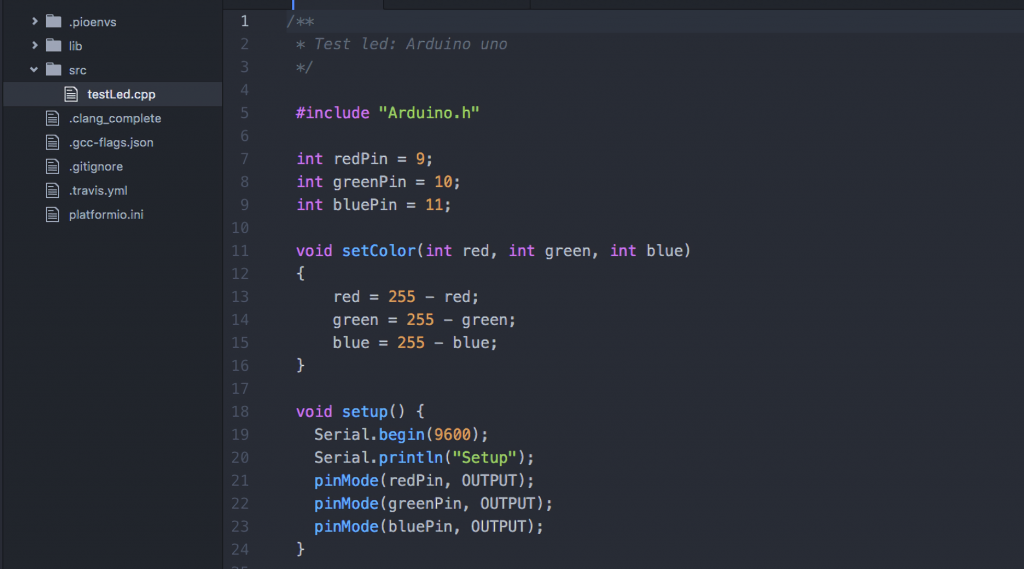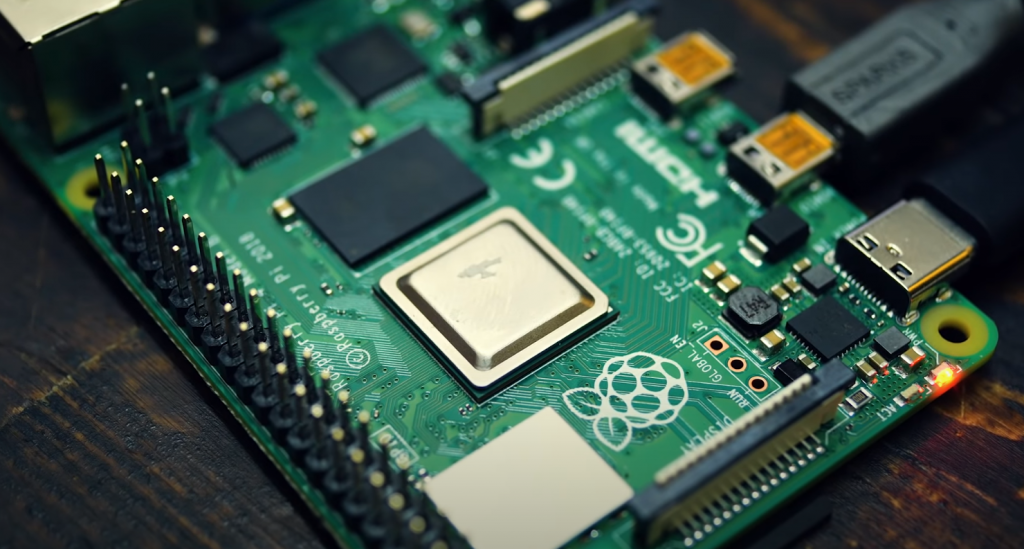Capacitors – those tiny components that quietly do their job in circuits, big and small. Yet, peek inside your device, and you’ll find capacitors of many types and sizes. Film and ceramic capacitors are two of the most common. Though similar in function, they have key differences that make each suitable for specific applications—journey into the miniature world of capacitance to discover what sets film and ceramic capacitors apart. We’ll compare their materials, performance, and uses so you can decide which type is the right fit for your next circuit design. Let’s delve deeper into the capacitive components that power our electronic lives.
Quick Glance Highlights
Film and ceramic capacitors have different properties that make them suitable for other applications. Film capacitors use plastic film and metal foil electrodes. They have high stability and low losses, making them ideal for timing and tuning circuits. However, they are larger in size. Ceramic capacitors use ceramic materials and have two electrodes applied to the surface. They are smaller, have higher capacitance values, and work well in high-frequency, bypass, and coupling applications. However, ceramic capacitors could be more stable. So, if you need stability, use film capacitors. Use ceramic capacitors if you need a smaller size and higher frequency response. The key is choosing the right capacitor type for your specific design needs.
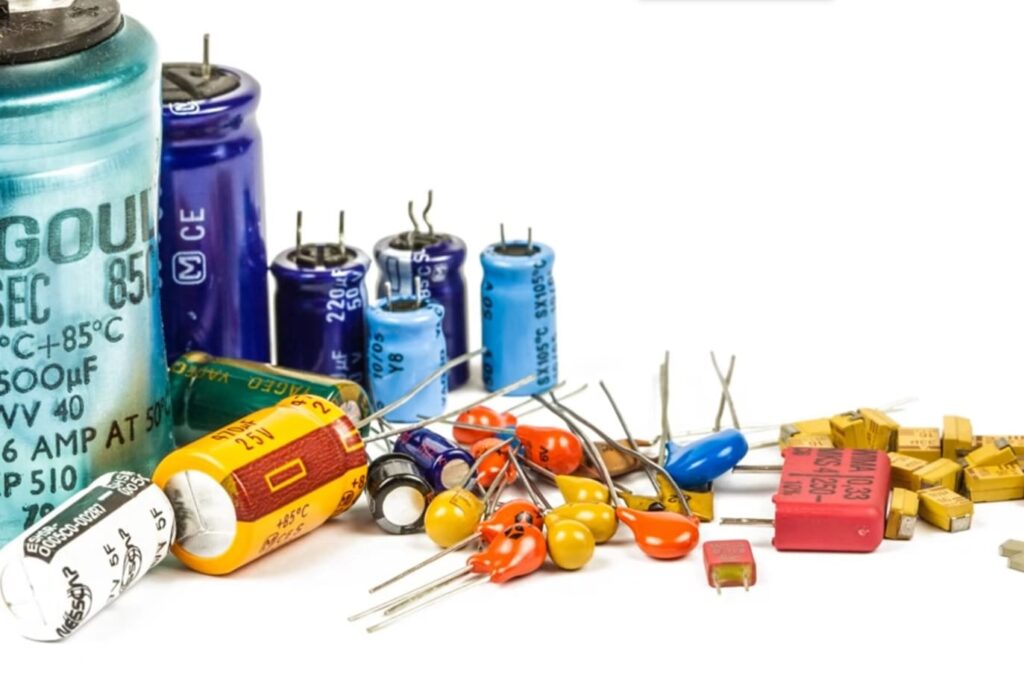
Film Capacitors
Film capacitors are a significant capacitor type characterized by the use of plastic film as the dielectric material between two metal foil electrodes. Their unique properties make them suitable for a variety of applications.
Construction and Working Principles
The basic construction of film capacitors consists of thin plastic film such as polypropylene or polyester sandwiched between two layers of metal foil acting as electrodes. The movies are wound or stacked to increase capacitance value. The winding is then encased with contact wires attached to the metal foils. An insulating case protects the capacitor.
When voltage is applied, an electric field forms between the two metal foils, storing energy in the polarized plastic film insulating the foils. The thin plastic film acts as a dielectric, enabling high capacitance density. Film capacitors function through this basic principle of storing charge in an electric field.
Advantages of Film Capacitors
Film capacitors offer several advantages:
- High working voltages – The plastic films can be layered to withstand high voltages exceeding 10,000V for power applications.
- Low inductance – Their coaxial lead designs minimize parasitic inductance for high-frequency operation.
- Low losses – The plastic film has very low conductivity, giving it low dielectric losses.
- High stability – Film capacitors exhibit excellent capacitance stability over time and frequency.
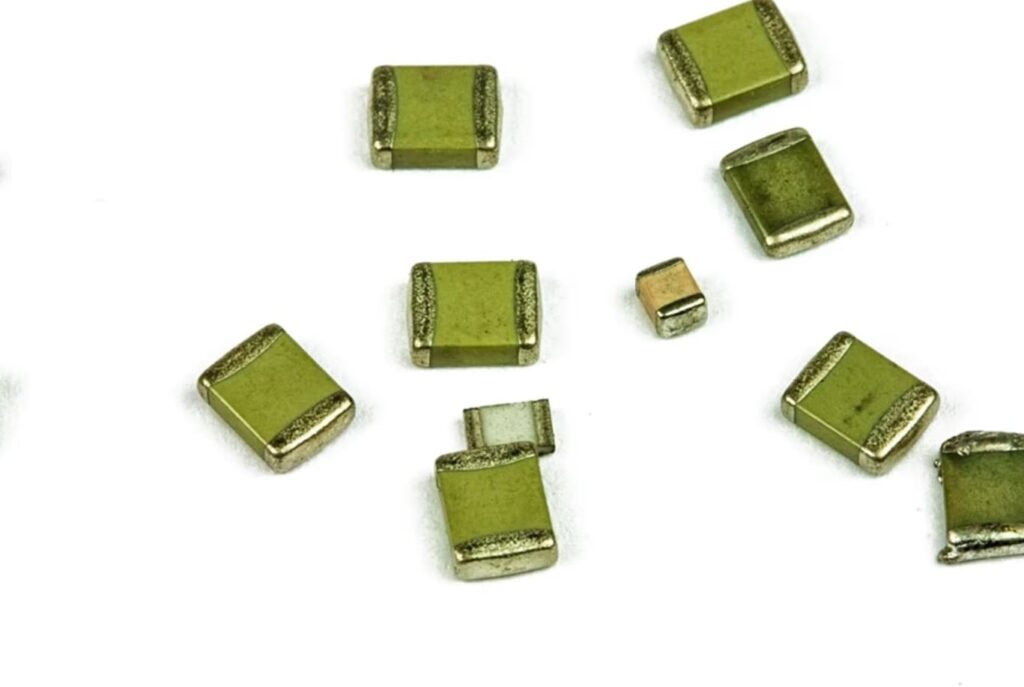
Disadvantages of Film Capacitors
Potential disadvantages of film capacitors include:
- Larger sizes than ceramic capacitors for a given capacitance value.
- They are more expensive than ceramic capacitors.
- Lower capacitance density than other dielectrics.
Applications
Critical applications taking advantage of film capacitors include:
- High voltage power supplies: Their high voltage ratings allow film caps to smooth ripple.
- Timing and pulse circuits: Low inductance and losses support precision timing.
- Tuning and filter circuits: Stable capacitance works well for tuning radios and audio crossover networks.
- Sample and hold courses: Low leakage makes film ideal, for example, and hold courses.
Film capacitors meet the demands of numerous applications thanks to their high stability, reliability, and low losses. Their unique plastic film dielectric delivers properties not achievable with other capacitor types.
Ceramic Capacitors
Film and ceramic capacitors are two of the most common types of capacitors used in electronics. But what are the key differences between these essential capacitor technologies?
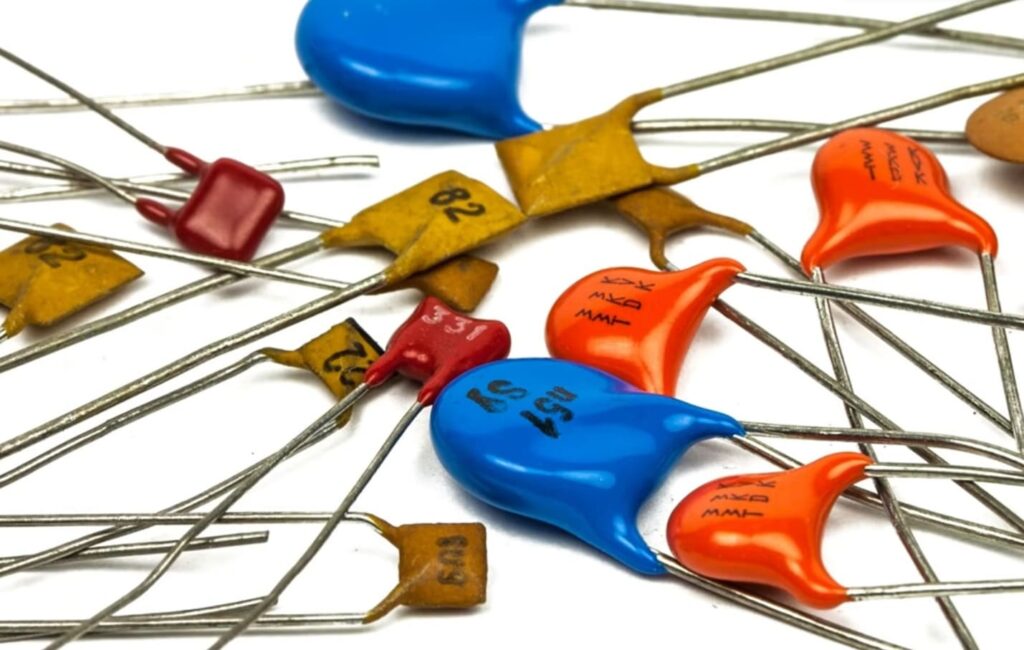
Dielectric Materials
The capacitor dielectric material is a significant differentiator between film and ceramic capacitors. Film capacitors use plastic films like polypropylene, polyester, and polyphenylene sulfide as the insulating dielectric layer between metal foil electrodes. Ceramic capacitors use ceramic materials like X7R, Y5V, and NP0 as the dielectric.
Performance Attributes
The dielectric material strongly influences capacitor performance:
- Stability – Film capacitors offer high capacitance stability over time, temperature, and frequency. Ceramic capacitors exhibit poorer peace and tolerance.
- Losses – The low-loss plastic films used in film capacitors give them a very low leakage current and low ESR/ESL. Ceramic capacitors have higher dielectric losses.
- Voltage – Film capacitors operate at working voltages exceeding 10kV. Ceramic capacitors are typically rated up to a few hundred volts.
- Capacitance – Ceramic capacitors achieve far higher volumetric efficiency and capacitance values than film types.
Size
The high dielectric constant of ceramic materials allows ceramic capacitors to offer high capacitance values in petite case sizes. Film capacitors require larger case sizes to achieve a given capacitance value.
Cost
Ceramic capacitors are lower in cost for a given capacitance value compared to film capacitors.
Typical Applications
- Film capacitors are used in tunable RF matching networks, timing circuits, and high-voltage power electronics.
- Ceramic capacitors find use in bypass, decoupling, frequency filters, and other applications where small size is critical.
Consider dielectric properties, performance needs, size constraints, and cost when selecting film vs. ceramic capacitors.
Comparison
Ceramic capacitors are one of the most widely used capacitor types in electronics. Their construction and ceramic dielectric provide unique properties ideal for many applications.
Construction and Working Principles
Ceramic capacitors use a ceramic material like X7R, or NP0 sandwiched between two electrode layers to form a capacitor. The electrodes are created by applying conductive metals to the ceramic. Multiple ceramic-electrode layers are stacked and connected to form a multilayer ceramic capacitor.
When voltage is applied, electric charge accumulates in the ceramic dielectric between the electrode layers. The polarized molecules in the ceramic store energy in the electric field. Ceramic materials have a high dielectric constant, enabling high capacitance values.
Advantages of Ceramic Capacitors
Ceramic capacitors offer several benefits:
- Small size – The ceramic dielectric allows high volumetric efficiency and small component size.
- High capacitance values into the farad range are possible in small case sizes.
- High frequency – Low inductance and resistance suit them for RF/microwave frequencies.
- Low cost – Materials and production costs are soft, making ceramic capacitors very inexpensive.
Disadvantages of Ceramic Capacitors
- Microphony – Vibration can cause signal noise due to ceramic mechanical sensitivity.
- Low voltage rating – Most ceramic capacitors are rated for less than 200V.
- Poor stability – Values can drift significantly over temperature and time.
Typical Applications
Ceramic capacitors are ideal for:
- Bypass/decoupling – Small size allows bypassing IC power supplies.
- Frequency filters – High-frequency handling suits them for RF filters.
- Coupling/buffering – Fast response works for signal coupling applications.
Ceramic capacitors deliver high capacitance values in tiny case sizes, enabling the miniature electronics we use every day. Their construction gives designers a versatile, inexpensive capacitor option.
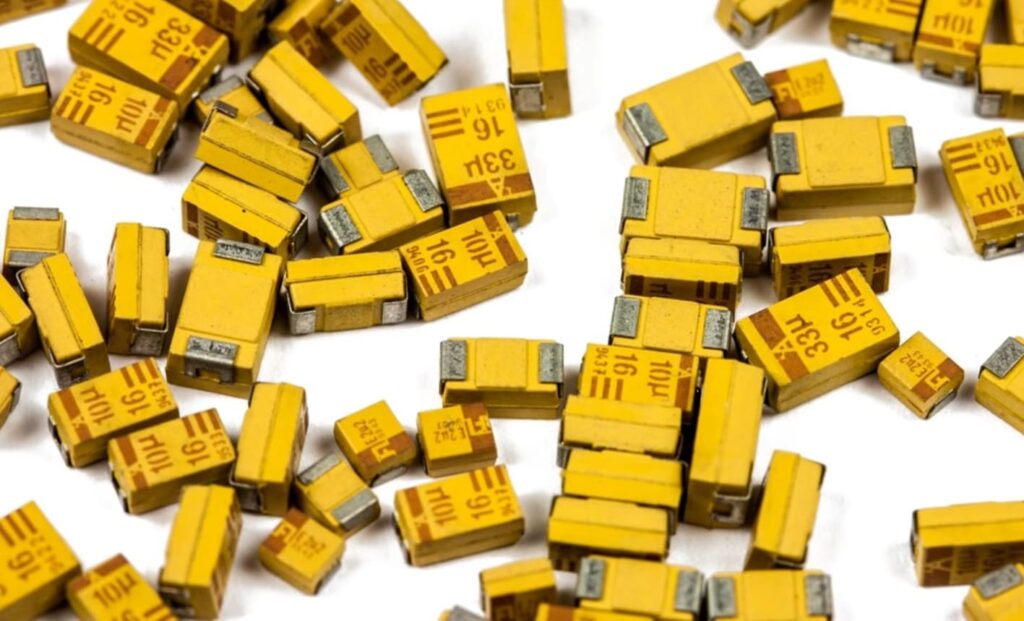
FAQ
What are the key differences between film and ceramic capacitors?
Film and ceramic capacitors have several important differences that make each suitable for certain applications. Film capacitors consist of plastic film dielectric layered with metal foil electrodes, while ceramic capacitors use ceramic materials for the dielectric with conductive coatings applied for the electrodes. The different dielectric materials lead to major performance differences.
Film capacitors offer high stability, precision, and low losses, making them well-suited for timing circuits, tuning applications, and pulsed power. However, they have lower capacitance values per volume compared to ceramics. Film caps also have larger sizes and are more expensive.
Ceramic capacitors provide higher capacitance values in smaller case sizes, ideal for high-density boards. They work well at high frequencies, making them useful for bypass, decoupling, and coupling applications. However, ceramic capacitors are less stable, with greater variation and temperature sensitivity versus film types.
What are the dielectric materials used in each capacitor?
Film capacitors use plastic films like polypropylene, polyester, polyphenylene sulfide, and polystyrene as the dielectric insulator between the metal electrode foils. This gives film capacitors high stability and low dielectric losses.
Ceramic capacitors use ceramic materials, including class 1 ceramics like NP0/C0G and class 2 ceramics like X7R and Y5V. Class 1 ceramics offer good stability, while class 2 ceramics trade off stability for higher volumetric efficiency—the ceramic acts as the dielectric between the conductive electrode coatings.
How do the different materials impact performance?
The plastic film dielectrics in film capacitors allow for low dielectric absorption and losses, meaning they discharge predictably with minimal energy loss. This gives film caps excellent frequency stability for timing and pulse applications. However, the lower dielectric constant of the plastic film compared to ceramic results in lower capacitance per volume.
The ceramic dielectrics used in ceramic capacitors have higher dielectric constants, enabling higher capacitance values in smaller case sizes. However, ceramic materials experience greater changes in capacitance over temperature and frequency compared to film. So, ceramic caps are less stable.
What are the key application differences?
Film capacitors’ high stability and low losses make them best for precision timing circuits, resonators and filters, sample and hold circuits, and pulsed power applications. They handle high current and voltage spikes well. Lower inductance film types work for high-frequency filtering.
Ceramic capacitors are ideal for bypassing, decoupling, buffering, and frequency filtering applications where small size and high capacitance are desirable. Their high-frequency handling also makes them strong for HF coupling and RF bypassing. However, instability limits ceramics in precision timing circuits.
What are the relative sizes of film vs. ceramic capacitors?
Due to the higher dielectric constant of ceramic materials, ceramic capacitors achieve far higher capacitance levels per volume than film capacitors. Ceramic chip capacitors are very small, with large values available in 0603, 0402, 0201, and even smaller case sizes.
Film capacitors have lower volumetric efficiency, meaning larger case sizes are needed to achieve a given capacitance value. Leaded film capacitors are often radial or axial styles rather than chip formats. But shrinking film dielectric thicknesses allow smaller film caps up to around 0.1μF in 0603 chips.
Which capacitor type is less expensive?
Ceramic capacitors are generally lower in cost than film capacitors of an equivalent capacitance value. The raw ceramic dielectric materials and manufacture of the small, multilayer ceramic chip designs keep costs down. Large volume production also keeps ceramic capacitor pricing very economical.
Film capacitors require more expensive plastic film dielectrics, metal foils, and more manual assembly. Smaller production volumes also limit opportunities to reduce manufacturing costs. Their price is justified for precision and stable circuits where the film is worth the cost.
Which capacitor type is more reliable and has a longer lifetime?
In many cases, film capacitors are designed and manufactured to achieve high reliability and long operating lifetimes spanning 10-15 years. Their plastic film materials are less prone to aging or wear out over time and use. However, operation near rated voltage and temperature extremes accelerates aging for both capacitor types.
Ceramic capacitors are generally considered to have shorter lifetimes than film capacitors. Their multilayer designs and brittle ceramic materials are more susceptible to microcracks and damage from mechanical and thermal stresses over time. However, careful derating can help prolong ceramic capacitor lifespan.
What safety considerations apply to film vs. ceramic capacitors?
Film capacitors have an advantage in high energy and power applications due to the superior impregnation systems used to fill any voids in the film layers. This prevents internal arcing or dielectric breakdown failures. Film caps use self-healing designs to mitigate dielectric failures as well.
Ceramic capacitors are more prone to catastrophic failures from internal arcing when subjected to voltage transients, impulse currents, or ESD events beyond their rating. The thin ceramic dielectric layers can rapidly break down when overstressed. However, careful rating and application keep ceramic capacitor failures from occurring.
Related Video: Capacitor Types Explained: electrolytic, ceramic, tantalum, plastic film
Final Thoughts
When it comes to choosing between film and ceramic capacitors, consider the trade-offs. Film capacitors offer stability, precision, and low losses for timing and tuning circuits. However, their larger size can be a drawback. Ceramic capacitors are smaller, have higher capacitance values, and work well at high frequencies – ideal for bypassing and coupling applications. However, they lack the stability of film capacitors. Analyze your circuit requirements and operating conditions to determine the most important capacitor characteristics. There is no one-size-fits-all solution. The good news is that having options allows designers to select the ideal capacitor type for their specific needs, leveraging the unique advantages of film and ceramic capacitors.

